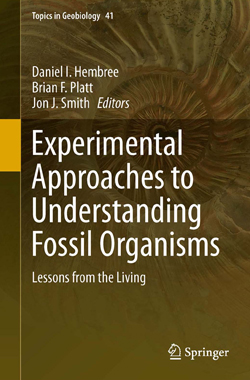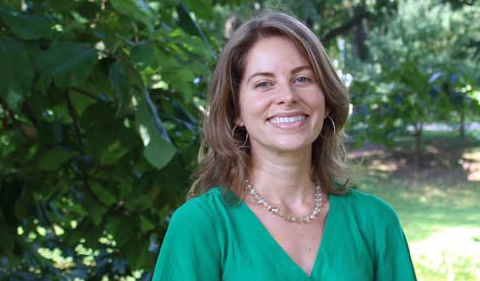October 2014 Geological Sciences Newsletter
To understand ancient life, scientists often look to modern organisms for lessons in extinct ecosystems and environments. And there are many unanswered questions.
“In most instances, the only way for paleontologists to address questions related to the life activities of extinct taxa is to investigate their closest living ancestors,” says Dr. Daniel Hembree, Associate Professor of Geological Sciences, in the book he co-edited, “Experimental Approaches to Understanding Fossil Organisms: Lessons from the Living” (Springer 2014).
 “We hope that the work described in this volume will be useful in launching new research questions and methods which will ultimately lead to a better understanding of the history of life on our planet,” he says.
“We hope that the work described in this volume will be useful in launching new research questions and methods which will ultimately lead to a better understanding of the history of life on our planet,” he says.
“Modern-analog studies allow paleontologists and sedimentary geologists to assess a range of questions regarding ancient life, from the behavioral and environmental significance of ichnofossils to the conditions responsible for different modes of fossil preservation, to the biomechanics of animal locomotion,” says the book’s preface. “While the application of modern observation and experimentation to assessing the past has been fundamental in the geosciences since the 19th century, recently developed techniques have arisen in multiple disciplines that allow new questions about the history of life to be addressed.”
Experimental Approaches to Understanding Fossil Organisms is based on a topical session held on Oct. 11, 2011, at the Geological Society of America’s Annual Meeting in Minneapolis, Minnesota. This session included 24 presentations covering a wide range of topics all focused on studying modern organisms to better understand and interpret ancient life. This was the third time the editors organized a session with this theme for the Geological Society of America.
The book is Vol. 41 of the Series: Topics in Geobiology. This volume is intended to provide professionals and students in the fields of paleontology and sedimentary geology in academia and industry with specific case studies demonstrating the variety of questions that can be asked, techniques and methodologies that can be employed, and interpretations that can be made using modern analogs to study ancient life.
“The wealth and breadth of active modern-analog research featured in this volume demonstrates that the solutions to many unanswered questions may be achieved by honoring the founding geological principle of uniformitarianism. Far from being stifled or replaced by technological advances in modeling simulations, digital resources, and statistical analyses, we anticipate that modern-analog studies will remain relevant to the geosciences and will, indeed, thrive as researchers find new creative applications for empirical, experimental approaches. As geoscientists continue to look to the world around us for perspectives on the history of life, new opportunities for interdisciplinary collaborations and the integration of new technologies promise to expand the range of paleontological problems that can be addressed through modern-analog experiments,” say the authors in their preface.
“Insight into this missing data can be gained through direct exploration of analogous living organisms and modern environments. Creative, experimental, and interdisciplinary treatments of such ancient-Earth analogs form the basis of this volume. It unites a diverse range of expert paleontologists, neontologists, and geologists presenting case studies that cover a spectrum of topics, including functional morphology, taphonomy, environments, and organism-substrate interactions,” says the Springer website. Lessons from the Living:
- Unifies an array of diverse topics in geobiology through the shared approach of using the present as the key to the past
- Tackles intriguing paleontological questions through creative, tangible, real-world experiments with modern analogous organisms and environments
- Represents advances in multiple paleontological and sedimentological fields and provides those familiar with the subject with new results and unique perspectives



















Comments